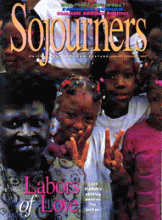In the 1980s, approximately 100,000 U.S. citizens traveled to Nicaragua. Some arrived to document the effects of the U.S.-sponsored war. Others picked coffee in organized brigades, or brought humanitarian aid in medicines and foodstuffs. Still others painted revolutionary murals in the cities.
In 1997, Nicaragua is no longer a land of revolution and Cold War battles. It is neither idealized nor detested by the rest of the world. Nicaragua finds itself in a long line of poor countries indebted in the billions, forced to use scarce resources for debt repayments instead of social programs.
After the fall 1996 presidential election, politically polarized Nicaraguans can agree on one thing: They are tired of leaders who promise the sky and, once elected, use precious resources to enrich themselves and their friends. A succession of corruptionincluding the overt corruption of the Somoza dynasty, the "piñata" of 1990 which parceled out vast amounts of wealth to the Sandinista leadership, and the Chamorro administration's friends who enriched themselves from "privatization" in the '90shas fueled distrust and cynicism toward government. President-elect Arnoldo Aleman is off to a shaky start; 10 political parties brought allegations of electoral irregularities by Aleman's party in the recent elections.
The positive fallout of the lack of confidence in government is that Nicaraguans are looking toward new, creative strategies to combat poverty. These new efforts involve a broad sector of actors on community, national, and international levels; are less paternalistic than past development schemes; and involve more participation from the poor.
Read the Full Article
